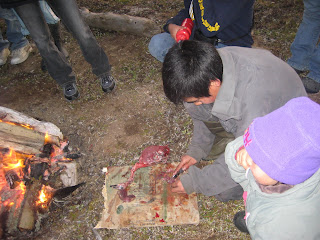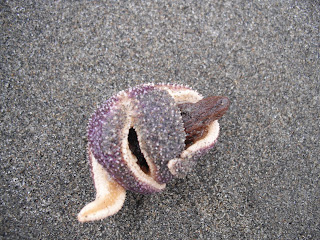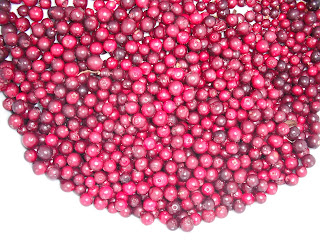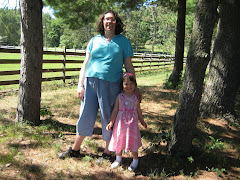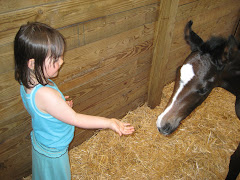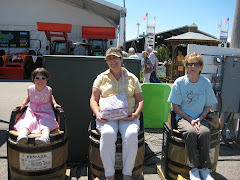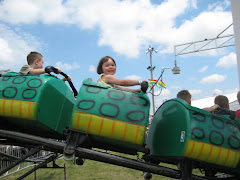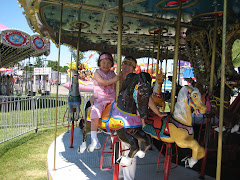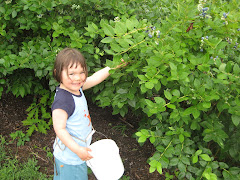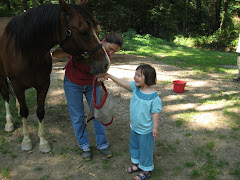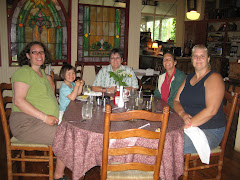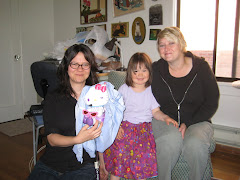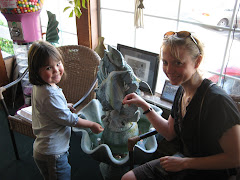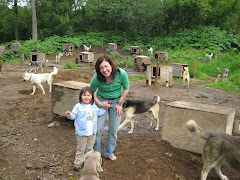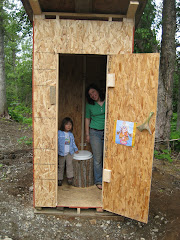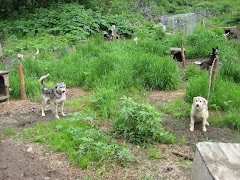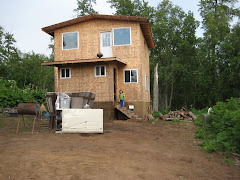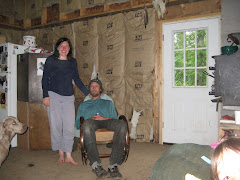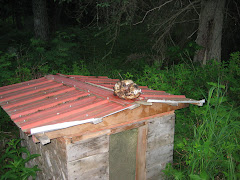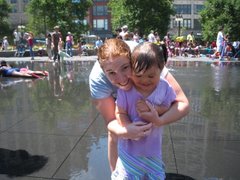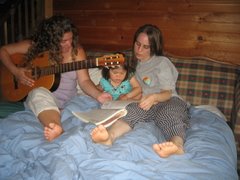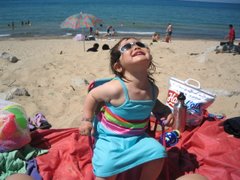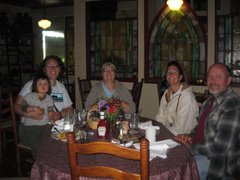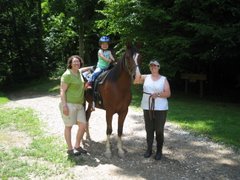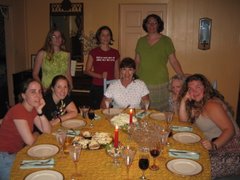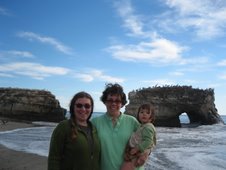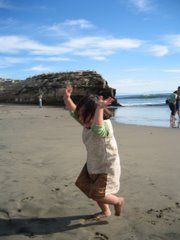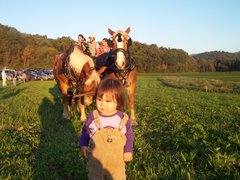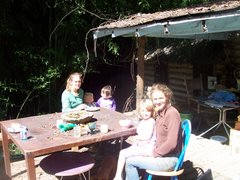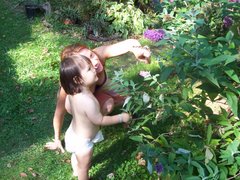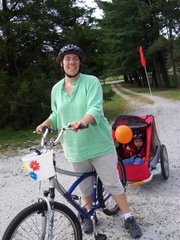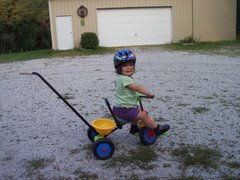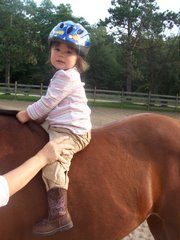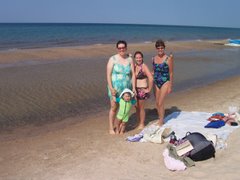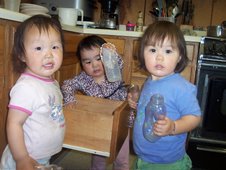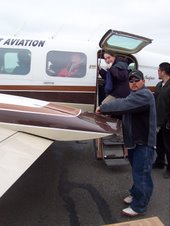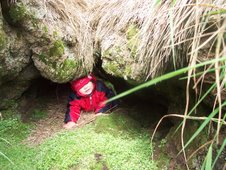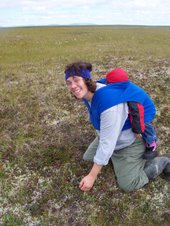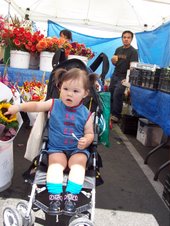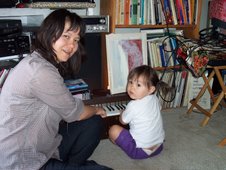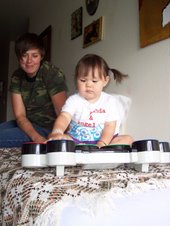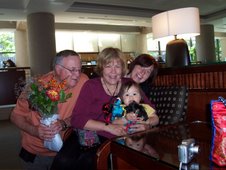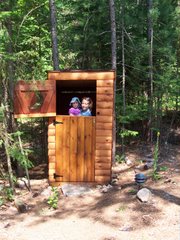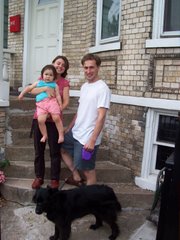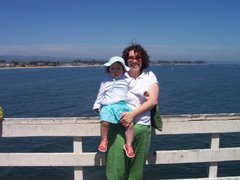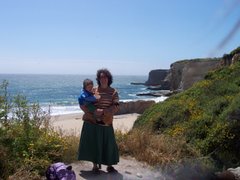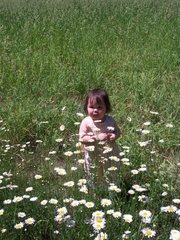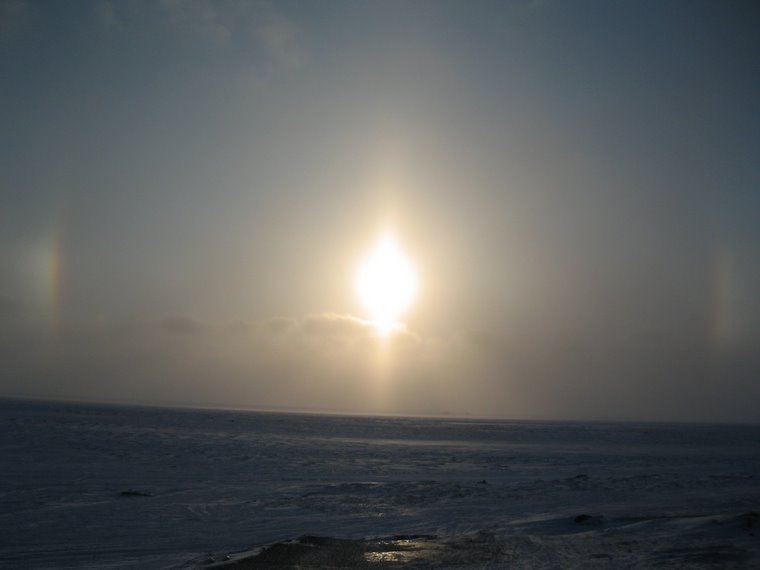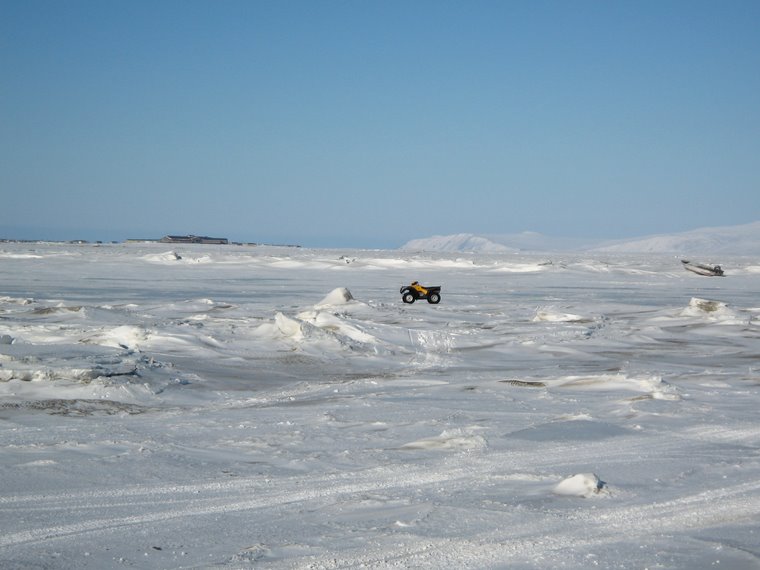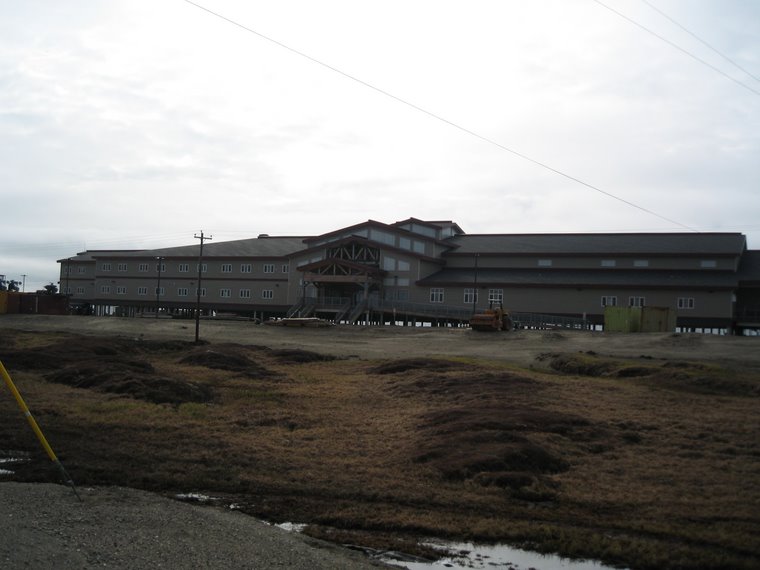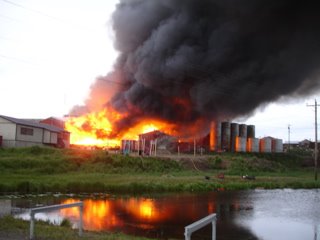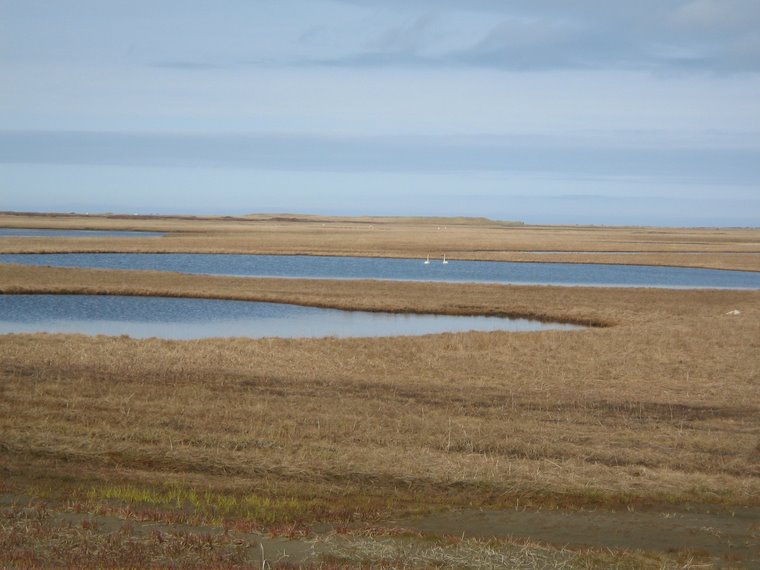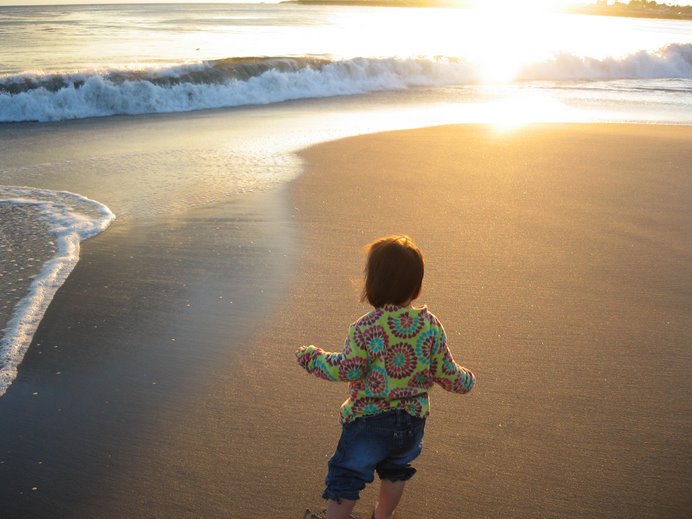So the raised bed garden box was a project I started nearly 3 years ago, in the unusually early spring we had in 2007. We had just moved to the new housing, and I was feeling the need to make it homey. As the snow melted, it became evident that the ground around the new houses was littered with construction trash -- screws, pieces of wood and drywall, cigarette butts, and gross things I never could figure out what they were, that I assume were just tossed aside during the winter construction, in the rush to build the housing, and by the time spring came there was no one left to clean up. So I started my beautification project, and that project led to planting of Alaskan wildflowers all around, and that project led to my clothesline, and that project led to my garden box.
It was fun to have an excuse to go down to the beach often for supplies (logs, etc), and to use found materials (such as nails and wires), and to have an outside project while then-toddler Esther played in the dirt, as she always wanted to do. I had no idea what I was doing, having only been informed by a few web searches. But sometimes it's fun to have a project in which nothing too much is riding on it, and so it doesn't matter if I make mistakes and can learn through trial and error.
I didn't get anything planted that summer, but I read that letting a box settle for a year was helpful anyway, so I felt pretty good about it. I ordered two big bags of soil, but other than that I filled it up with seaweed and other things I found on the beach, to enrich it. I also started my compost project that year, as well, with an old washer found at the junkyard. I love composting. It's just one of those things that makes me feel good, even if I'm not really good at it or do it super well. I have ideas about how to do it better, but it's just one of those projects that is forever on the list.
So then the summer of 2008 I was pregnant, and didn't do too much with the garden bed except put the compost from the previous winter into it and mix it up and cover it with a tarp. Tuluk helped me dump the compost bin and it was still kind of smelly and he almost lost his lunch. It made me pause and realize who was going to be changing all the diapers in the near future. Ha! Anyway, then when I returned with Iris, everything was already frozen and snowy, so it was put off for another year. But I think the extra time helped the compost enrich the soil.
So this summer, I thought, what the heck! I'll give it a shot. I had some old seeds that needed to be used or tossed anyway, and so if they didn't grow, no big. The question I have always had about this garden project is when to plant, because June is generally 40 degrees and rainy, and end of July/August is the time when it gets warm if it's going to get warm at all, but then I've only got about a month & a half till first frost.
 Plus I generally travel in the summer, so when to tend it? How to protect it from marauding dogs and children? Elders I've spoken with about gardening here said that earlier in the century, about the time of the reindeer herding, there were some gardening projects (maybe started by the missionary teachers? I don't know) here, and they had to be surrounded by large fences to protect them from the dogs. Well, I haven't gotten to that part yet; we'll see about how I would make a fence in the future -- I think it probably would be necessary, because dogs seem to be drawn to the box as if it's a magnet -- not for eating the veggies, but for using the bathroom! But I think the danger was early in the season, rather than when the veggies were full grown.
Plus I generally travel in the summer, so when to tend it? How to protect it from marauding dogs and children? Elders I've spoken with about gardening here said that earlier in the century, about the time of the reindeer herding, there were some gardening projects (maybe started by the missionary teachers? I don't know) here, and they had to be surrounded by large fences to protect them from the dogs. Well, I haven't gotten to that part yet; we'll see about how I would make a fence in the future -- I think it probably would be necessary, because dogs seem to be drawn to the box as if it's a magnet -- not for eating the veggies, but for using the bathroom! But I think the danger was early in the season, rather than when the veggies were full grown.Regardless, it was a success! I tossed the seeds in about the middle of June, and although nothing had popped up by the time I left for our summer travels, by the time I came back the first week in August, I had great growth! The spinach and kale was pretty fabulous. The broccoli had already gone to flower, but we ate it anyway. And the squashes seemed like they would have grown, but they just didn't have time.
However, now that we sucked all the nutrients out of the garden experiment that we could and it's all under snow now, we still have access to fresh, organic produce, something that is unprecedented in all my years here. It is definitely an expensive undertaking, but considering the cost of wilted, squishy, unknown-origin produce in the store here in town (and that's when it's available), and considering the cost and effort I put in to getting frozen fruits & vegetables out here as well as dehydrating fruits & veggies in the summer, it really pays off.
Who knew it could be possible? I'm now a member of Carnation Washington's FULL CIRCLE FARM CSA! And I've converted many members of the teaching staff as well. I'm actually kicking myself that I didn't research it earlier, because the farm has been shipping to rural Alaskan communities for a while -- many of them -- it just never crossed my mind that it could be possible. It totally changes our quality of life -- my family is eating fresh, crunchy, ORGANIC things for breakfast, lunch, and dinner. Again, I ask, Who knew?
Basically the farm packs it on Monday mornings and ships it Alaska Airlines freight, which means it goes in the belly of a big daily freighter (I think?), and then it goes on the passenger planes out to Bethel (half of which is just cargo anyway), and then on the small plane with the company Hageland Aviation that comes here three times a day. Most of the time it gets here by Tuesday evening, its scheduled delivery time, but there are times, mostly because of weather, that it gets delayed because the plane gets delayed -- however, that's been the minority of weeks. Then it gets dropped off at the airport, and our very nice vice principal collects it for us, since he's often down there meeting the plane anyway, or our extremely nice plane agent Peter, who brings it to us out of the kindness of his heart, because it's not in his contract to haul freight to town from the airport. There have been some weeks when I've been worried it would be frozen, but, really, for the most part it arrives in an amazing fashion. AND Full Circle Farm guarantees everything -- so even if it's a loss for them, they credit or replace whatever has arrived badly. They even will ship eggs! Free-Range, natural eggs! No more hormones or products of chicken cruelty for us! Hoorah!
With the quantities of subsistence food coming through my door, and the weekly deliveries of a produce box, who needs the store?! AND who needs to leave? I love my life. :)






































